
BHS Museum of History
Lourdes, Bamban
July 29, 2008
Bamban Historical Society/JCI Bamban Kayabe unveiled the first ever WWII Korean Peace Memorial dedicated to the Korean labor personnel who were drafted into construction and engineering units of the Imperial Japanese Forces and assigned to the Kembu Group in WWII along the ridges and hills of the Bamban.
This part of history has been neglected by writers and historians. In fact, these Korean laborers were civilians and brought from Korea to Philippines to work primarily in construction of airfields, fortifications, and lately, curving out tunnels in the hard rock of the Bamban Hills. They were called Pioneers (in Japanese military terms, they belong to Setsueitai) and were joined by Taiwanese, Chinese laborers. To some extent, there were also Filipinos who were forced to work as laborers and joined these Pioneers.
They were manned by Japanese officers. Unlike Korean guards who were drafted to work as soldiers in the Japanese Army, the labor personnel were attached to support units and Imperial Japanese Navy's Setsueitai (308, 322, 318 Pioneers) and were assigned in the Kembu Group's Naval Combat Sectors under Rear Admiral Ushie Sugimoto. Their number may reach thousands, as the data on actual figures is still incomplete. Certain records from diaries of officers who were assigned at Bamban during WWII indicates that Taiwanese and Chinese reached to close to 2,000 labor personnel. A similar or more numbers of Koreans may be possible, since most of them were indeed assigned specifically in the Pioneer units.
Instead of rifles and grenades, these labor personnel instead carried shovels or perhaps working in the deep holes of the mountains with their bare hands. With the coming of the American liberating forces, they were defenseless and with the tremendous firepower of the artillery and air bombardment in Bamban Hills starting January 1945, thew were trapped in the numerous combat encounters between American 40th, 43rd, and 38th Divisions and the combined Japanese army and navy force of the Kembu Group during the battle of Bamban Hills. According to available data primarily from Japanese sources, most of them died as a consequence.
Hon. Mayor Leonardo Annunciacion and Hon. Vice-Mayor Fred Lumboy for the past several months, had been working with their Korean counterparts for a sisterhood pact. On July 29, various officials and delegates from Gangjin City headed by Lee Kwang-Hyeong and Lee Sam-Hyun made their historic visit to Bamban to solidify and ink the tie-up between the two local government entities. At 11:30 a.m., the Korean delegation along with various visitors including the complete line-up of local officers of Bamban came to officially dedicate the Korean WWII Peace Memorial in remembrance of the labor personnel who died in Bamban during WWII. A simple tombstone made from a sandstone washed by Mt. Pinatubo in 1992 was chosen and erected as the memorial marker.
A journal is now currently being undertaken for research by the Bamban Historical Society in order to dig deeper into the stories of the labor personnel who were actually civilians taken from their countries in WWII and forced to work in foreign lands, until they die due to the raging battles. This is a part of the history of the Battle of Bamban Hills; a story that should not be forgotten.
In a sign of deep mourning, as the Korean delegation knows nothing about this particular history of their people, a solemn prayer was conducted for the eternal repose of souls of all the labor personnel.
Rhonie Dela Cruz
Lourdes, Bamban
July 29, 2008
Bamban Historical Society/JCI Bamban Kayabe unveiled the first ever WWII Korean Peace Memorial dedicated to the Korean labor personnel who were drafted into construction and engineering units of the Imperial Japanese Forces and assigned to the Kembu Group in WWII along the ridges and hills of the Bamban.
This part of history has been neglected by writers and historians. In fact, these Korean laborers were civilians and brought from Korea to Philippines to work primarily in construction of airfields, fortifications, and lately, curving out tunnels in the hard rock of the Bamban Hills. They were called Pioneers (in Japanese military terms, they belong to Setsueitai) and were joined by Taiwanese, Chinese laborers. To some extent, there were also Filipinos who were forced to work as laborers and joined these Pioneers.
They were manned by Japanese officers. Unlike Korean guards who were drafted to work as soldiers in the Japanese Army, the labor personnel were attached to support units and Imperial Japanese Navy's Setsueitai (308, 322, 318 Pioneers) and were assigned in the Kembu Group's Naval Combat Sectors under Rear Admiral Ushie Sugimoto. Their number may reach thousands, as the data on actual figures is still incomplete. Certain records from diaries of officers who were assigned at Bamban during WWII indicates that Taiwanese and Chinese reached to close to 2,000 labor personnel. A similar or more numbers of Koreans may be possible, since most of them were indeed assigned specifically in the Pioneer units.
Instead of rifles and grenades, these labor personnel instead carried shovels or perhaps working in the deep holes of the mountains with their bare hands. With the coming of the American liberating forces, they were defenseless and with the tremendous firepower of the artillery and air bombardment in Bamban Hills starting January 1945, thew were trapped in the numerous combat encounters between American 40th, 43rd, and 38th Divisions and the combined Japanese army and navy force of the Kembu Group during the battle of Bamban Hills. According to available data primarily from Japanese sources, most of them died as a consequence.
Hon. Mayor Leonardo Annunciacion and Hon. Vice-Mayor Fred Lumboy for the past several months, had been working with their Korean counterparts for a sisterhood pact. On July 29, various officials and delegates from Gangjin City headed by Lee Kwang-Hyeong and Lee Sam-Hyun made their historic visit to Bamban to solidify and ink the tie-up between the two local government entities. At 11:30 a.m., the Korean delegation along with various visitors including the complete line-up of local officers of Bamban came to officially dedicate the Korean WWII Peace Memorial in remembrance of the labor personnel who died in Bamban during WWII. A simple tombstone made from a sandstone washed by Mt. Pinatubo in 1992 was chosen and erected as the memorial marker.
A journal is now currently being undertaken for research by the Bamban Historical Society in order to dig deeper into the stories of the labor personnel who were actually civilians taken from their countries in WWII and forced to work in foreign lands, until they die due to the raging battles. This is a part of the history of the Battle of Bamban Hills; a story that should not be forgotten.
In a sign of deep mourning, as the Korean delegation knows nothing about this particular history of their people, a solemn prayer was conducted for the eternal repose of souls of all the labor personnel.
Rhonie Dela Cruz







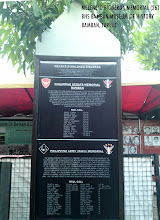
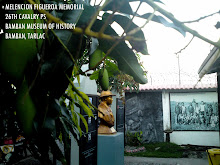
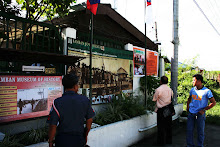
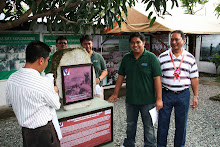
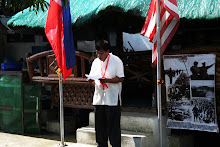

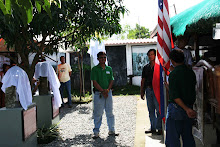









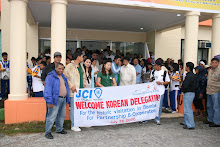
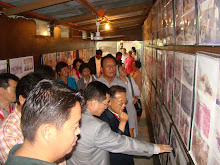








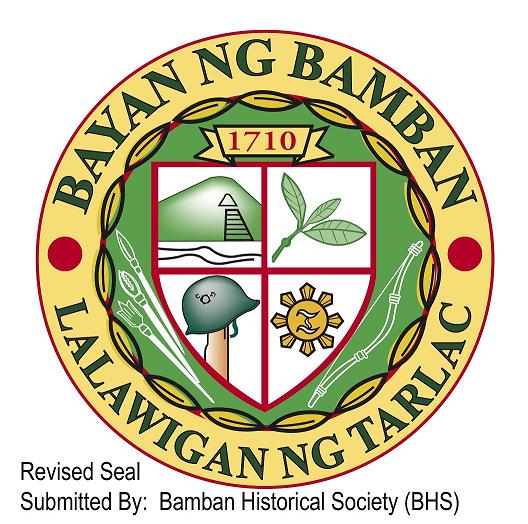

No comments:
Post a Comment